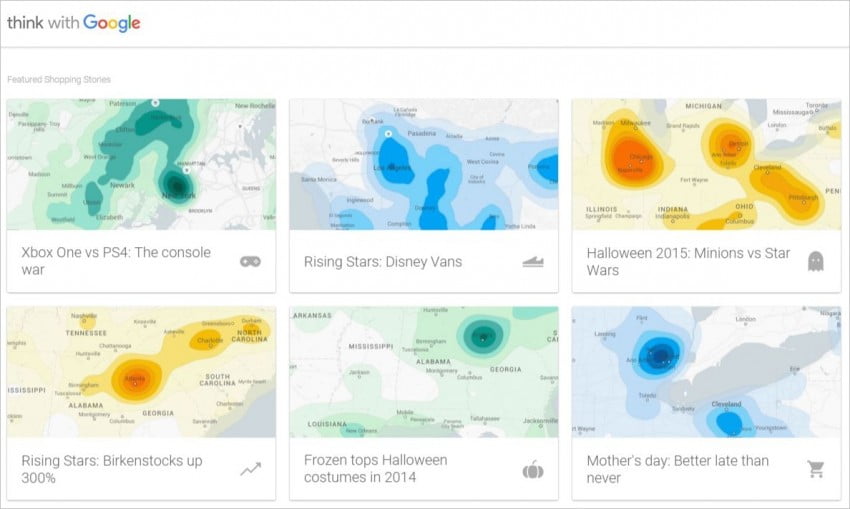
Inventory is and has always been a tricky problem for small business owners. Having too much of an item in stock that doesn’t sell is a rookie mistake, as is running out of popular products. However, a new tool called Google Shopping Insights might be just what small business owners need.
Shopping Insights estimates trends and popularity by breaking down search data by products, cities, and devices, and illustrates it in heat maps. This gives retailers the power to know which products to order more or less of, protecting them from losing money and alienating customers.
Given that eCommerce garners so much attention online and elsewhere, it would be easy to just assume that most sales today take place over the Internet, but that isn’t necessarily true.
Jonathan Alferness, VP product management for Google Shopping, explained in an article, “While 87 percent of shopping research happens online, 92 percent of goods are still sold in retail stores. By better understanding user’s shopping intent online, retailers can make more informed local merchandising and marketing decisions for their stores.”
Additionally, marketers can also use the data provided by Google Shopping Insights to target Adwords. If, for example, you know that hoverboards are infinitely “hotter” in Las Vegas than in Atlanta, based on what consumers are Googling, why would you waste resources targeting Atlanta?
Google Shopping Insights – still in beta and only available for the U.S. market at the moment – works best when tracking major trends. The tool currently includes data of 5,000 of the most popular product searches on Google Shopping made between April 2014 and September 2015, and these would, of course, include Star Wars and Minions costumes, at least according to Alferness’s report.
While 5,000 products cover most of the holiday shopping lists, Google Shopping Insights isn’t particularly helpful to retailers of products that are considered relatively niche, but still in demand.
Alferness however, promises that the tool will have fresh updates, new data, stories and insights in the coming months. “It’s all part of our long-term commitment to help retailers succeed with deeper insights about users’ intent and context.”
Image: Google
[“source-smallbiztrends”]




